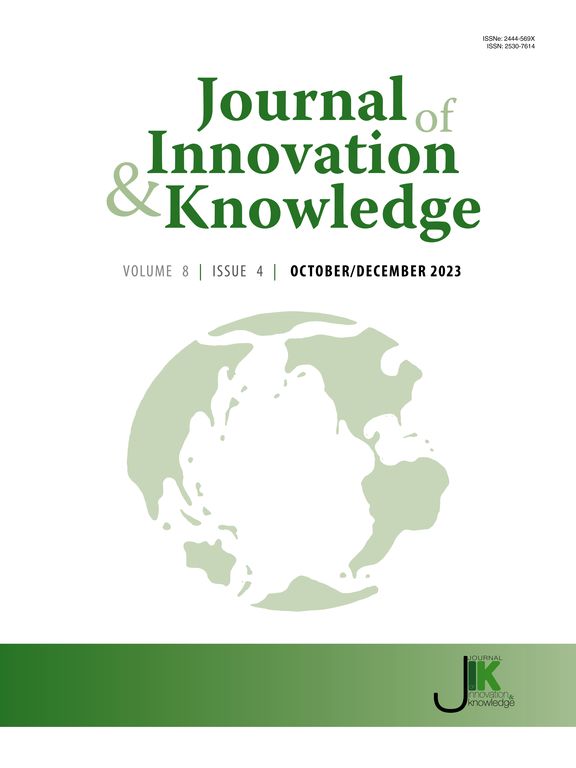创新互动教学,增强学习行为
IF 15.6
1区 管理学
Q1 BUSINESS
引用次数: 0
摘要
本研究应用技术接受模型来检验用户对新兴技术的接受程度,特别是LINE和b谷歌翻译,用于语言学习。台湾某大学实施合作学习与问题学习相结合的多模式互动教学计划。完成后,对参与的学生进行了调查。因子负荷分析揭示了变量与其相应结构之间的强相关性。信度检验确认问卷的内部一致性,而验证性因子分析验证所有构念的收敛效度。研究还揭示了技术接受行为的部门差异,结果表明学习动机和学生态度都有显着改善。本文章由计算机程序翻译,如有差异,请以英文原文为准。
Innovative interactive instruction to enhance learning behaviors
This study applies the Technology Acceptance Model to examine user acceptance of emerging technologies—specifically LINE and Google Translate—for language learning. A multimodal interactive teaching program, combining cooperative learning and problem-based learning, was implemented at a university in Taiwan. Upon completion, a survey was conducted among participating students. Factor loading analysis reveal strong correlations between the variables and their corresponding constructs. Reliability tests confirm the internal consistency of the questionnaire, while confirmatory factor analysis validates the convergent validity of all constructs. The study also uncovered departmental differences in technology acceptance behavior, and the results indicated significant improvements in both learning motivation and student attitudes.
求助全文
通过发布文献求助,成功后即可免费获取论文全文。
去求助
来源期刊

Journal of Innovation & Knowledge
Multiple-
CiteScore
16.10
自引率
12.70%
发文量
118
审稿时长
37 days
期刊介绍:
The Journal of Innovation and Knowledge (JIK) explores how innovation drives knowledge creation and vice versa, emphasizing that not all innovation leads to knowledge, but enduring innovation across diverse fields fosters theory and knowledge. JIK invites papers on innovations enhancing or generating knowledge, covering innovation processes, structures, outcomes, and behaviors at various levels. Articles in JIK examine knowledge-related changes promoting innovation for societal best practices.
JIK serves as a platform for high-quality studies undergoing double-blind peer review, ensuring global dissemination to scholars, practitioners, and policymakers who recognize innovation and knowledge as economic drivers. It publishes theoretical articles, empirical studies, case studies, reviews, and other content, addressing current trends and emerging topics in innovation and knowledge. The journal welcomes suggestions for special issues and encourages articles to showcase contextual differences and lessons for a broad audience.
In essence, JIK is an interdisciplinary journal dedicated to advancing theoretical and practical innovations and knowledge across multiple fields, including Economics, Business and Management, Engineering, Science, and Education.
 求助内容:
求助内容: 应助结果提醒方式:
应助结果提醒方式:


